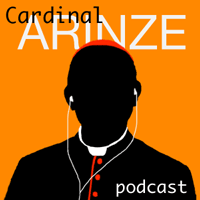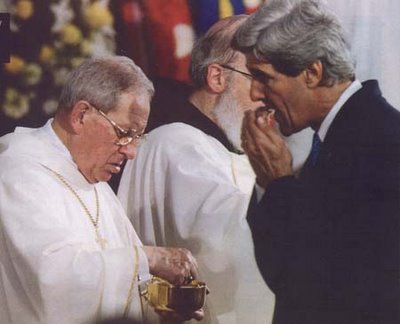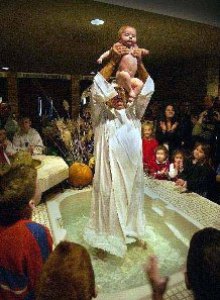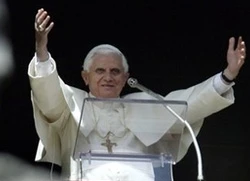
So why can't the USCCB get it? "Catholic" politicians such as John Kerry that support abortion should not receive communion. All you liberal "Catholics" out there, thank whatever lucky stars you pray to that I'm not your bishop because I would extend that ban on communion to include all the sacraments. If you support abortion and think you can be a Catholic, guess what?
Bada boom! Excommunicated!
I can't believe I just wrote bada boom!
ROME, March 5, 2008 (LifeSiteNews.com) - Some Catholic Bishops in North America seem to be on a different page from the Vatican when it comes to reception of Communion for Catholic politicians who support abortion. Since the controversy came to a head in the 2004 US federal election, most Catholic bishops in the US have either remained silent on the issue, or have made softer statements than the authoritative word from Rome: a word that has been re-affirmed many times and continues to be reasserted regularly.
Most recently, Francis Cardinal Arinze, speaking at a Catholic family conference in Ohio last November, referred to a letter on the subject sent by then-Cardinal Ratzinger, now Pope Benedict XVI, who said that such politicians "must" be "refused" Communion.
Video footage, posted recently by the conference organisers and made available on YouTube, shows Cardinal Arinze, the head of Vatican office of Divine Worship and the Discipline of the Sacraments, replying to the question of pro-abortion politicians and the inaction of their bishops. He said "You may have heard about the letter which the present Holy Father, as prefect of the congregation for the doctrine of the faith, sent to American bishops on that issue, so the matter is very clear."
He told those in attendance that the question is not one of Church teaching, but of the immutable divine law of God. "It isn't just that they [the politicians in question] have gone against church teaching, but they have gone against divine law; thou shalt not kill."
But since the insistence of Rome has failed to induce positive action from most bishops in the North American hierarchy and abroad, reporters continue to ask the same questions.
Romans in the know, however, repeat that the Pope's letter on the matter has solved the issue. LifeSiteNews.com spoke last month about the issue with Msgr. Andrew R. Baker a professor at the Pontifical University of Saint Thomas Aquinas (the Angelicum) in Rome, one of Rome's major historic institutions.
Professor Baker told LifeSiteNews.com, "Certainly you'd have to apply that famous canon of 915 that says one who persists in manifest grave sin should not be admitted to Holy Communion."
"And I think the possibility of looking at the moral principles outlined in the letter attributed to Cardinal Ratzinger that came a number of years ago - those are good moral principles to apply that canon 915."
Professor Baker's opinion is a repetition of that given in Ohio by Cardinal Arinze, who told conferees that he agrees action ought to be taken against bishops who refuse to enforce Canon 915.
Arinze elicited much laughter and applause when he made the analogy, "To the person who says, 'Personally I'm against abortion, but if people what to do it, I'll leave them free', you could say, 'You are a member of the senate or the congress, personally I'm not in favour of shooting the whole lot of you, but if somebody else wants to shoot all of you in the Senate, or all of you in Congress, it's just pro-choice for that person, but personally, I'm not in favour.'
"That is what he is saying. He's saying he's personally not in favour of killing these millions of children in the womb, but if others want to do it, that's pro-choice. That's what he is saying.
"And then you ask, what does the Holy See do? Why doesn't the Pope send 12 Swiss Guards to arrest them all?"
Arinze said that he is regularly asked if a person who votes for abortion can receive Holy Communion. He replies, "Do you really need a cardinal from the Vatican to answer that?
"Get the children for first Communion and say to them, 'Somebody votes for the killing of unborn babies, and says, I voted for that, I will vote for that every time.' And these babies are killed not one or two, but in millions, and that person says, 'I'm a practising Catholic', should that person receive Communion next Sunday? The children will answer that at the drop of a hat. You don't need a cardinal to answer that."
































